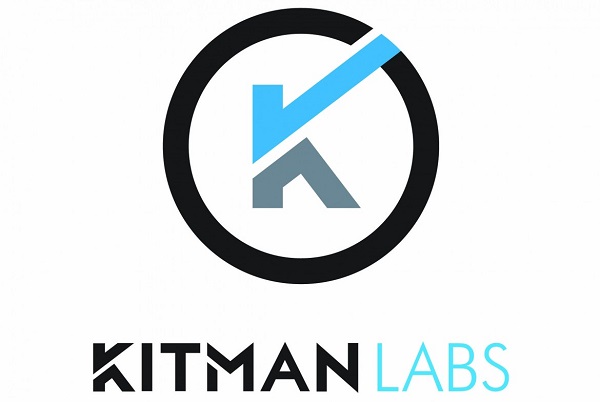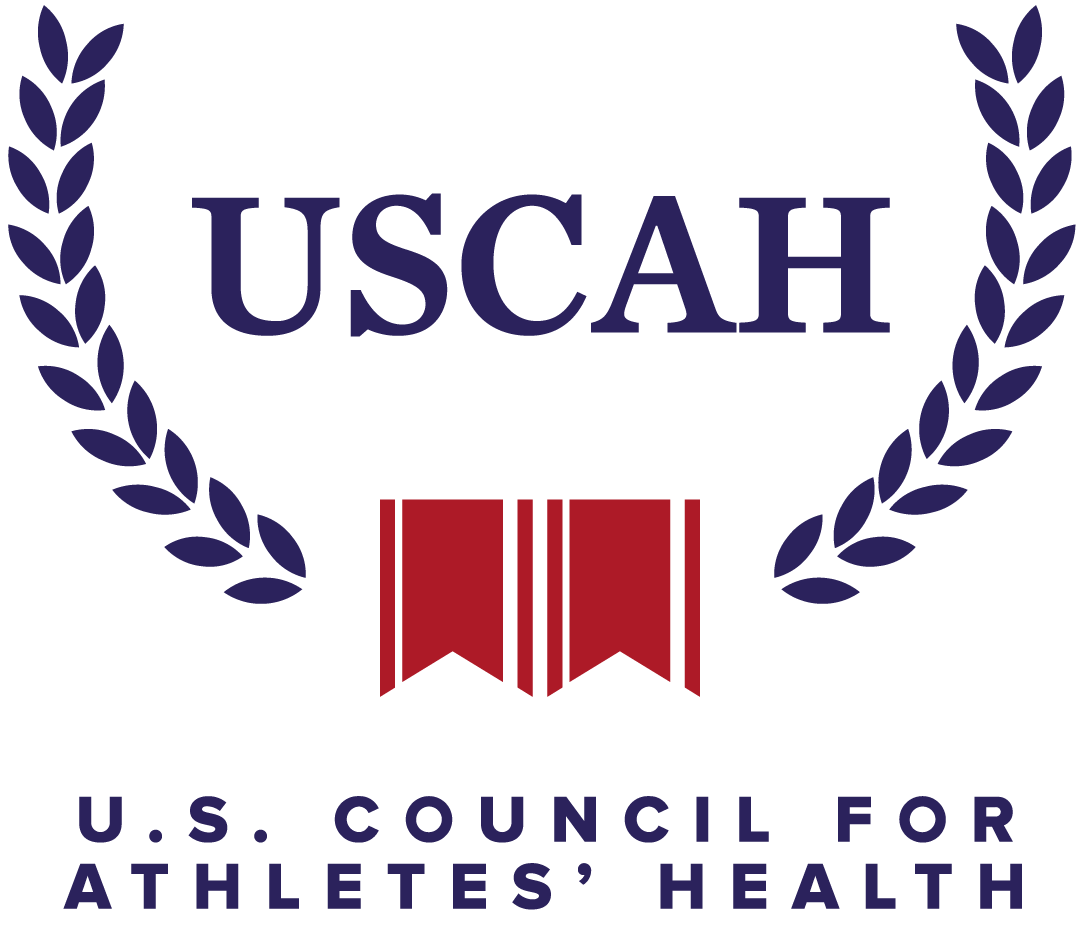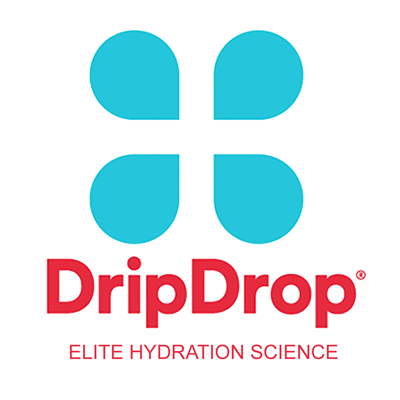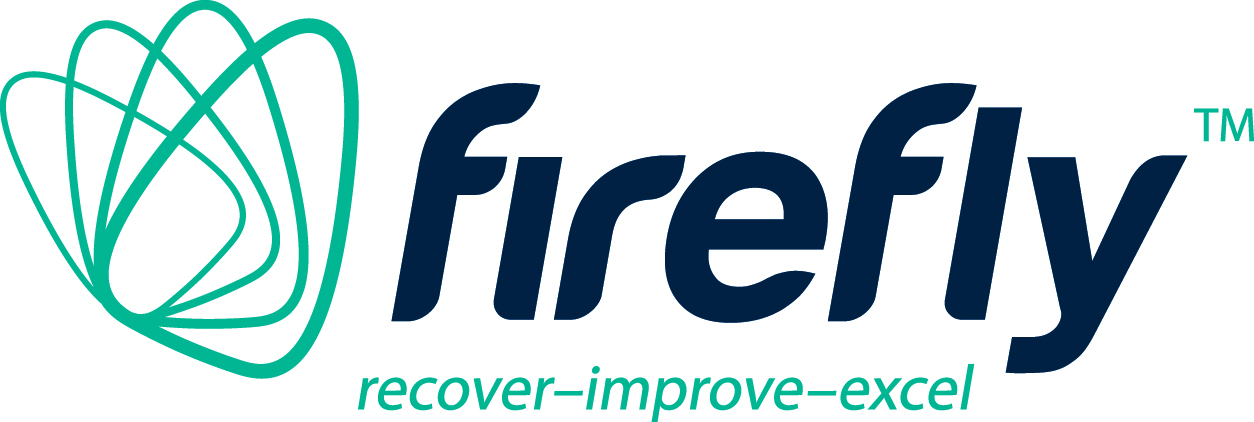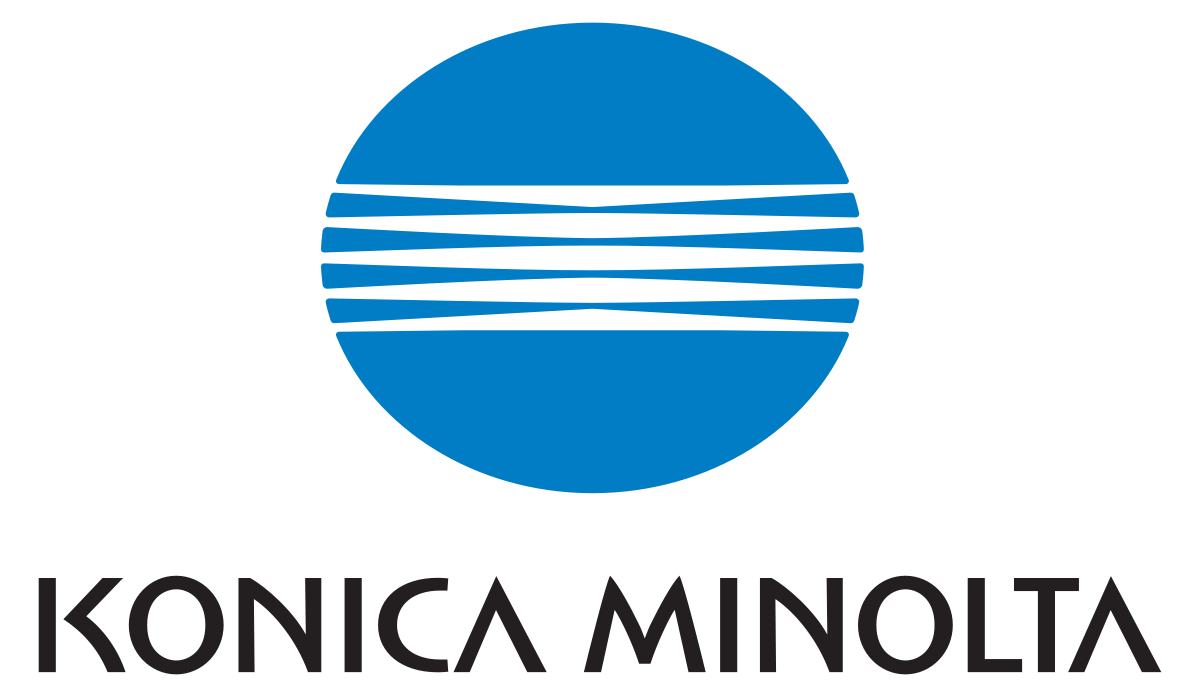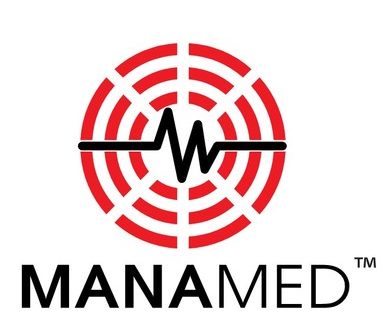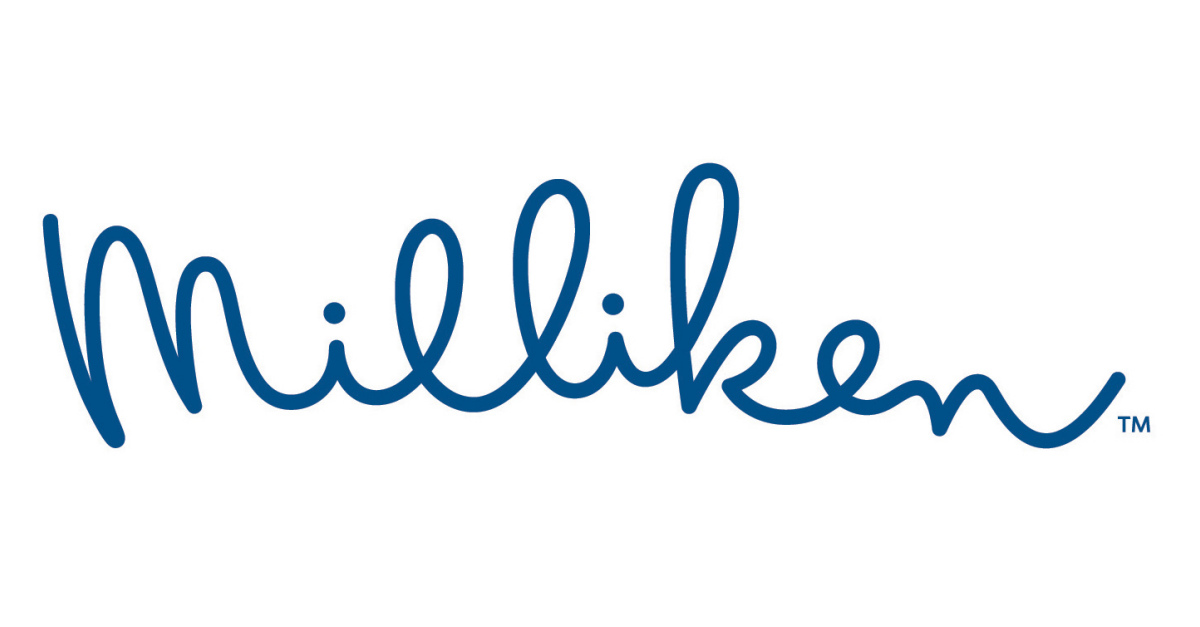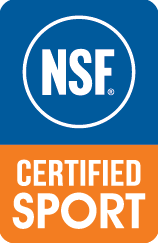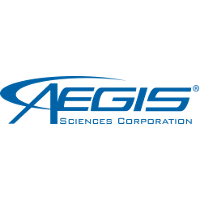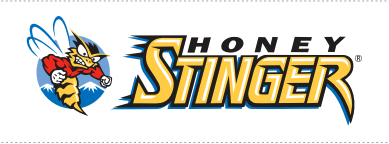Conference Background and Mission
The Pac-12 Conference, with support from the Student-Athlete Health and Well-Being Board, hosts the annual Student-Athlete Health Conference (SAHC). The conference is a comprehensive educational and business meeting aimed at collaboration amongst the sports medicine teams and promoting professional growth with the Pac 12 conference. The meeting functions as a forum for physicians, athletic trainers, dietitians, and mental health professionals to share best practices, evaluate Pac-12 and institutional policies, and discuss various aspects of student-athlete health and wellness. The conference provides a unique opportunity for a multi-disciplinary exchange with the leaders in both research and the clinical care of competitive athletes.
The goals of the conference are to:
- Create an environment of collaboration and networking that preserves the standing of the Pac 12 Conference as the leader of student-athlete care
- Provide a space for representatives from each discipline to meet and discuss conference-wide trends and topics that impact each group
- Present an educational program that exhibits current trends and research in collegiate sports medicine
- Highlight Pac 12 funded research projects from across the conference
- Provide designated time for Pac 12 committees to conduct business meetings
The two-day program will bring together top sports medicine clinicians and researchers from across the nation to explore important issues surrounding the health and well-being of student-athletes, present new research findings, and discuss policies and procedures that can help better treat student-athletes.
Institutional sports medicine professionals as well as athletic directors, faculty athletic representatives, research teams and Pac 12 administrators are encouraged to attend.
For more information on the Pac 12 Health and Well Being Initiative, click here
Grant Awarded Research Projects
| Title: Impact of COVID-19 on student athlete lung function and diffusing capacity |
Project Summary: The healthy lung can limit exercise performance in the well-trained athletic population so lung health is critical for optimal well-being and athletic performance.
|
| Title: The Pac-12 Student-Athlete Health and Well-Being Mental Health Coordinating Unit |
Project Summary: The Mental Health Coordinating Unit (MHCU) was established in 2020. The unit works with the Pac-12 SAHWBI Board and Mental Health Task Force help to:
Led by a program director from a Pac-12 university, the MHCU will begin on the campus of the University of Arizona as the Wildcats’ program serves as a model for future implementation across all Pac-12 universities. |
| Title: Head Trauma: Advancing New Biomarker Tests for Concussion Diagnosis and Recovery |
| Project Summary: The human brain is impacted by blood flow with each heartbeat with 25 percent of cardiac output directed toward the head. This flow generates a measurable pulse through the brain described by this study as the “headpulse.” This pulse can be measured noninvasively via a portable device. Developing the practice for measuring this biomarker will alleviate current challenges in predicting concussion resolution due to the lack of objective indicators. This study will also aim to characterize the brain’s recovery from sports-related concussions using an approach comprised of intermittent headpulse measurements in addition to current common practices. This study hypothesizes that the restoration of headpulse patterns to normal values will parallel improvements in key metrics. Ultimately, it is of this research team’s belief that tracking the headpulse may support safer release of student-athletes to normal activities following concussions in addition to other added benefits in healthcare. |
| Title: Injury Prevention: Documenting Overuse and Non-Time-Loss Injuries |
| Project Summary: Sports injury epidemiology has historically excluded overuse and non-time-loss injuries. Instead, research has focused on acute and time-loss injuries, despite the potential for overuse and non-time-loss injuries to hinder performance and influence long-term health. This study seeks to report the epidemiology of overuse and non-time-loss injuries across multiple Pac-12 sports while also identifying potential factors that may influence the occurrence of such injuries. The study will also look to report on the workload burden for healthcare utilization associated with treatment of such injuries. Conducting the research will help identify risk factors for overuse and non-time-loss injuries as well as provide details on the number and types of treatments and encounters. Results of this study will help inform decisions regarding injury prevention, holistic health and appropriate medical coverage, as the study’s findings will be of use for all sports medicine clinicians across the Pac-12. |
| Title: Injury Prevention: Utilizing Ultrasound Imaging to Detect Precursors of Achilles Tendon, Patellar Tendon and Plantar Fascia Injuries |
| Project Summary: The patellar tendon, and Achilles tendon, and plantar fascia are common athletic injuries. These often result in prolonged recovery times, decreased performance and can also derail promising athletic careers. This study seeks to develop a method of using brief preseason ultrasound examinations of the bilateral patellar tendon, Achilles tendon and plantar fascia to identify precursors to injury of each. With the collaboration of select Pac-12 universities, the examinations will be performed prior to each academic season for a total of three years, first identifying subgroups of student-athletes with tendon and/or fascia abnormalities and those without before looking closer at those who develop such injuries as seasons progress. This research will provide impacts in the short-term by creating an easily-implemented procedure to help identify such injury risks as well as long-term by helping develop strategies to prevent future tendon and/or fascia injuries. |
| Title: Student Athlete Health and Well-Being: Looking at the Past to Inform the Future |
| Project Summary: In collecting and utilizing data from former student-athletes to inform current best practices, this study will assess longitudinal patterns of physical and psychological health while paying attention to the presence of chronic conditions (e.g., diabetes, heart disease, obesity, neurodegenerative diseases, etc.) and mental health diagnoses in student-athlete alumni compared to cohort matched student non-athlete alumni. The research will also aim to build upon previous related research by assessing socioeconomic and first-generation status as group profiles, as well as modifying factors of student-athlete health following their collegiate careers. The goal of this research is not only to characterize life-course trajectories, but also to utilize this information to identify best practices, thereby creating opportunities to improve and optimize the overall health and well-being of current and future student-athletes. |
| Title: Head Trauma: Designing Safer Helmets Using Advanced Materials and Modeling |
| Project Summary: The University of Colorado’s Boulder and Denver campuses have worked together to research football helmet design with a focus on lowering the severity of impacts and reducing the prevalence of concussions in the sport. Recently, the NFL released several computer models of helmets to investigate the influence of helmet materials and designs on head impacts. This study seeks to leverage this state-of-the-art technology and create new models to improve helmet safety using a recently developed high-performance polymer called liquid-crystal elastomers (LCEs). The LCEs will be incorporated in the helmet models and virtually tested to optimize their design. This approach will allow the investigators to rapidly test and evaluate the performance of new materials in helmets, without having to manufacture and physically validate each new configuration. |
| Title: Head Trauma: The Subtypes of Concussion – Classification and Recovery Trajectories in Pac-12 Student Athletes |
| Project Summary: The goal for this study is to advance the science of concussion care and change how concussions are diagnosed and managed, allowing for earlier and more focused rehabilitation and treatments. By performing clinical research, this study will look to characterize and compare concussion subtypes over time and by gender, sport, school and medical history, including cardiovascular health, while also assessing recovery trajectories by concussion subtypes over a six-month span to allow for anticipated outcomes and targeted-treatment options. |
| Title: Overuse Injuries/Injury Protection: Biomechanical metrics to improve performance and reduce elbow injuries in baseball |
| Project Summary: A common problem among baseball players is an injury to the ulnar collateral ligament (UCL) at the elbow. The UCL provides ~50% counter to elbow force (varus torque) during pitching, putting the UCL at risk for injury. Elbow varus torque increases as ball velocity increases, but not for all pitchers. Elbow varus torque may be mediated by player physical factors, such as muscle performance, joint motion, and stability. The knowledge gap is understanding the ball velocity – elbow varus torque relationship, and how physical factors can mediate the relationship to reduce elbow varus torque. This study will aim to characterize player risk of UCL injuries by developing player profiles that can be used to: 1) target the identified physical factors to reduce injuries and inform rehabilitation after injury, 2) specify return to sport criteria and 3) guide performance enhancement. |
| Title: Head Trauma: Reactive Postural Responses after Concussion: Objective Measurement of Balance Recovery and Prospective Injury Risk |
| Project Summary: Reactive postural responses are used to recover balance, but they have received relatively little attention after concussion despite being common in athletics and critical to athlete safety and performance. Prior research has shown previously concussed athletes experience a greater risk of musculoskeletal injuries, but the cause of this increased risk is not known. This study will focus on a critical barrier of current balance assessments for concussion by objectively quantifying reactive postural responses to determine the connection between post-concussion postural control and musculoskeletal injuries. This project seeks to have immediate impact on concussion management by establishing a protocol to assess postural responses that is tailored for concussions and clinical use and can be rapidly implemented through the Pac-12. Long-term, this study seeks to provide the framework for future studies to examine rehabilitative approaches that train balance recovery to accelerate the recovery and/or decrease the risk of musculoskeletal injury following concussions. |
| Title: Injury Prevention: Improving Rehabilitation Following Anterior Cruciate Ligament Repair with Real-Time Feedback during Low Intensity Cycling |
| Project Summary: With an astounding 25% of athletes with previous anterior cruciate ligament (ACL) reconstruction surgery developing additional ACL injury following surgery, this study aims to reduce compensatory patterns during movement exercises while evaluating the relationship between cycling symmetry and return-to-play outcomes. Of concern, current data indicates that these patterns progress, rather than diminish, during the course of rehabilitation and can go undetected due to maximal tests typically taking place several months following surgery. Low-intensity cycling is commonly prescribed and known to be safe soon after surgery. This project seeks to improve symmetry by providing biomechanical feedback during low-intensity cycling. It also aims to determine if cycling symmetry leads to improved symmetry during weight bearing tasks and reduces subsequent injuries. If successful, we believe this technique may improve rehabilitation of a variety of other leg injuries as well. |
| Title: Student-Athlete Well-Being: Social Media Engagement and Mental Health in Pac-12 Student-Athletes |
| Project Summary: By investigating the relationship between social media activity, self-perception and mental health among Pac-12 student-athletes, this project seeks to gain a better understanding of both the detrimental and positive aspects of student-athletes’ social media use, as well as the potential benefits of protective behavioral strategies involving social media (e.g., turning off electronic devices at night or restricting social media access during study time). The findings will seek to provide improved abilities to educate student-athletes on adaptive uses of social media and bolster their academic, mental health, physical and personal well-being. |
| Title: The STEALTH Project Pilot Study: Student-Athlete Health Assessment Using PROMIS Tools |
| Project Summary: The study proposes the use of National Institute of Health’s Patient-Reported Outcomes Measurement Information System (PROMIS) surveys to assess the impact of participation and injuries in Pac-12 sports, inclusive of the physical, mental and social health of student-athletes before, during and after their competition seasons. The results of this pilot study will help identify student-athlete populations that may be at elevated risk, and allow for the identification of best practices that allow coaches, trainers, therapists and other healthcare providers to optimize student-athlete health and well-being as they participate over the course of a season. |
| Title: Head Trauma and Mental Health: From Head Impacts to Brain Injury, Determining the Mechanism Underlying Concussions in Pac-12 Football |
| Project Summary: In an effort to determine the causes of concussive injury, this study plans to implement the use of the Stanford Instrumented Mouthguard 2.0 (MiG2) in combination with MR imaging with the football teams at two Pac-12 institutions to collect data on concussions. This will expand upon recent research and data collected with an instrumented mouthguard in combination with MRI with the Stanford football program. In that study, researchers discovered that concussions could be predicted by peak head angular acceleration, correlating with signal changes on MRI. At its completion, this will be the first study to identify mechanisms of concussion by tracing the head angular acceleration input, to brain tissue damage, to advanced imaging detection of injury. |
| Title: Head Trauma: Strengthening Concussion Education by Engaging Medical Staff: Continued Program Development and Evaluation |
| Project Summary: Expanding on a previous grant project that led to the development of a web-based concussion training platform (www.GoHuddle.net), this study aims to 1) evaluate the effectiveness and implementation of the platform, and 2) enhance the impact of the platform through a preseason meeting between coaches and medical staff about concussion. This study will use a participant-engaged approach to develop materials to support such a meeting and will conduct an evaluation of the platform and the additive impact of the preseason meeting in all interested Pac-12 institutions. |
| Title: Injury Surveillance: Scaling Up Student-Athlete Exposure Tracking Using PacTrac |
| Project Summary: After a prior grant project developed PacTrac, a web-based application system that allows athletic trainers (ATs) to capture detailed athletic exposures to evaluate injury rate data, it was determined that the level of detail in which exposure is reported can influence injury rate estimates, and that the feasibility of collecting the most detail exposure information varied across AT staffing, sport and schools. The objectives of the proposal are to scale PacTrac for use conference-wide, engage stakeholders to develop conference-wide minimum exposure reporting standards for each sport, and assess the implementation feasibility of those standards using PacTrac. Upon completion, the project will provide the Conference and its member schools with the flexible exposure reporting system needed to harness the full potential of the Pac-12’s Sports Injury Registry Management and Analytics Program (SIRMAP) to support local and conference-wide improvements in student-athlete health and wellness. |
| Title: Injury and Prevention: Developing a Comprehensive, Quantitative Understanding of Hip Morphometrics and Biomechanics in Collegiate Athletes at Risk for Developing Femoroacetabular Impingement Syndrome |
| Project Summary: Femoroacetabular impingement syndrome (FAIS) is a common cause of hip pain and dysfunction among collegiate athletes, and a known precursor to hip osteoarthritis. Prevention is the key to reducing rates of FAIS, but research in this area is lacking. The research team believes effective prevention of FAIS starts with an in-depth understanding of how hip anatomy is altered in three-dimensions, and the extent to which abnormal hip anatomy disrupts hip biomechanics, prior to the onset of symptoms. In this study, researchers will compare 3D hip shape and biomechanics between collegiate athletes, control subjects that do not have a history of participation in the same sports, and FAIS patients who are seen in treated in the clinic. The future impact of this work is that it will support a prospective trial to determine if application of a modified training regimen reduces the prevalence of FAIS in athletes. |
| Title: Mental Health: #DamWorthIt Campaign |
| Project Summary: The #DamWorthIt Campaign, which was launched at Oregon State University in 2018, has a mission statement of utilizing the influential platform of sport to open the conversation around mental health in collegiate athletics, ending the stigma to make every team, every sport, and every student-athlete know that they are #DamWorthIt! The #DamWorthIt Campaign is designed to be a comprehensive program that will work to end the stigma around mental health through three pillars: education, resources and awareness/comfort. The #DamWorthIt Campaign aims to normalize, destigmatize and spread awareness about the epidemic of mental health in collegiate athletics through these three distinct pillars. The focus of this grant project is to expand the #DamWorthIt program throughout Pac-12 Conference Athletic Departments and Student-Athlete Advisory Committees. |
| Title: Head Trauma: Roles of Nutritive Support and Supplementation |
| Project Summary: Studies have shown that the brain uses lactate as a fuel source when available. Studies have also shown that patients with traumatic brain injury (TBI) are often undernourished, meaning the brain has less fuel sources to use for healing. The goal of this project is to determine whether or not supplementation with lactate on the background of adequate nutrition will improve TBI recovery by giving the brain an extra fuel source. This will be accomplished through a series of studies on laboratory rats, where rats with mild TBIs that mimic concussions will be given standard of care (inadequate) nutrition, adequate nutrition, and adequate nutrition plus extra lactate. Brain healing will be assessed to see if appropriate nutrition with and without lactate supplementation improves recovery time and outcomes. |
| Title: Overuse Injuries/Injury Prevention: Integration of Biomechanics-based Informatics for Prevention of Stress Fractures |
| Project Summary: Stress fractures are a very common form of injury in athletes, especially long distance runners. This project’s goal is to analyze a group of runners’ biomechanical information such as foot motion patterns, foot-to-ground contact patterns, and accelerations and then track stress fracture development in these runners over a three year period to see which biomechanical patterns are associated with the development of stress fractures. This new biomechanics-based information can then be integrated with already known risk factors such as nutrition status and training volume/intensity to predict runners who are at a higher risk of stress fracture. |
| Title: Injury Prevention: Simple motion capture technology for readiness of return to sport assessment and injury risk prediction |
| Project Summary: There are few objective and widely accepted methods to determine when student-athletes are ready to return to their sport after injury or surgery, and even fewer methods available to measure abnormal joint movements. The goal of this study is to compare a low cost simple motion capture technology (Microsoft Kinect™) to the gold standard (but more expensive and complicated) standard motion capture system (Vicon™). Functional movement data will be evaluated in healthy volunteers using both systems and results will be compared to help determine if Microsoft Kinect is a viable option to measure abnormal joint movements and help facilitate safe return to sports after injury at a lower cost than standard systems. |
| Title: Pac-12 and NCAA Collaboration – Concussion Assessment, Research, and Education (CARE) Consortium Data Collection: Establishing a Research Infrastructure and Framework |
| Project Summary: This project, co-funded by the NCAA, will create the first full-conference regional research hub of the landmark CARE Consortium. The Consortium is funded by a partnership of the U.S. Department of Defense Military Health System and the NCAA, and is a multi-site, longitudinal investigation of concussion and repetitive head impacts in NCAA athletes and military service academy cadets that addresses major gaps in the understanding of concussion. Through this project, each Pac-12 institution will be able to collect neurocognitive and neurobehavioral data on athletes at baseline, at the time a concussion occurs, and then at multiple time-points over the course of the year following an injury. |
| Title: Health and Wellness: Assessing Student-Athlete Health and Performance |
| Project Summary: The overall aim of our Pac 12 funded protocol was to identify important indicators of student-athlete health and wellness, as well as implement and disseminate important ‘best practices’ for sustainable student-athlete training and performance. To accomplish this aim we assembled a multi-disciplinary team with expertise in sports medicine, neuroscience, epidemiology, sleep physiology & exercise physiology spanning the athletic and academic environments at the University of Colorado Boulder. The outcome of this effort has been a series of projects utilizing approaches from each discipline examining health/well-being using survey tools, athlete sleep behaviors, athlete blood volume parameters and issues related to iron homeostasis. |
| Title: Pac-12 Student-Athlete Project on Developing Coach Education |
| Project Summary: This project aims to develop evidence-based, easily scalable educational programs for college coaches about topics related to student-athlete health and safety, beginning with concussions. |
| Title: Overuse Injuries/Injury Prevention: A Prospective Study to Improve Bone Health and Reduce Incidence of Bone Stress Injuries in Pac-12 Female Distance Runners |
| Project Summary: The primary objective of this project is to improve the health of female collegiate distance runners, reduce the incidence and severity of bone stress injuries, and shorten recovery time. This will be accomplished with an active nutrition education program emphasizing the achievement of positive energy balance measured by increasing energy intake and/or reducing exercise energy expenditure. |
| Title: Cardiovascular Screening in the Pac-12 Conference: Establishing Best Practices |
| Project Summary: Sudden cardiac death is the leading medical cause of death in college athletes and has been designated as a high priority area for research by the Pac-12. This study is designed to answer critical questions regarding screening for cardiovascular conditions that predispose athletes to sudden death by comparing the schools that screen with history and a physical to those that add an electrocardiogram. The study will compare conditions identified, total costs, costs per diagnosis, time lost from competition, and any adverse outcomes related to screening with each strategy. |
| Title: Thermal Management for Athletes: Problems and Opportunities |
| Project Summary: The Heller laboratory at Stanford has developed a unique technology that rapidly extracts heat from the core of the body. It has been used in a number of cases where athletes were showing signs of heat illness, and recovery was rapid. This project will include a telemetric study of changes in body temperature of athletes during practice and competition as a function of environmental conditions, as well as comparative studies of methods to achieve rapid recovery from hyperthermia and studies of the benefits of heat extraction in physical conditioning of female athletes. |
| Title: Mental Health and Head Trauma: Brain Health in Male and Female Basketball Student-Athletes at the University of Utah |
| Project Summary: There is a need to better define the neurobiological, cognitive, and behavior changes in competitive athletes prone to head injury both pre- and post-injury. The aim of this study is to assess the association between concussive symptoms, mood states, cognitive performance, and brain changes in female and male basketball student-athletes and football student-athletes. |
| Title: Injury Surveillance: How much is enough? Enhancing the precision of team injury estimates using detailed athlete exposure information |
| Project Summary: In the first funding cycle of the Grant Program, the Pac-12 funded the creation of a conference-wide sports injury database with the help of Presagia Sports, an Athlete Electronic Medical Record (EMR) platform. The database enables Conference doctors and athletic trainers to analyze the prevalence of sports injuries and conduct investigations on aspects of injury management such as prevention, treatment, and concussion assessment. In conjunction with the advent of the conference-wide database, the results of the OSU project will provide essential evidence that the Pac-12 can immediately use as a basis for deciding what level of athletic exposure data should be captured in order to harness the full potential of the new database. |
SPEAKERS
DAYS
MEMBER SCHOOLS
GRANT AWARD DOLLARS
Invited Speakers for 2022
(Click on Speaker Name to View the Complete Bio)
Schedule
Our 3-Day Agenda of Conference Events
Pre-Conference Meetings
8:00am-3:00pm: Student-Athlete Health and Well-Being Board – Joshua 1
3:30pm-5:00pm: Brain Trauma Task Force – Joshua 1
3:30pm-5:30pm Mental Health Task Force – Joshua 2
Athletic Trainer Vendor Presentations - Joshua 1
Welcome Reception - Lift Bar at the Aria Resort & Casino
BREAKFAST in Sponsor Lounge - Orovada 3/5/8
Welcome Address - Orovada 1/2/4
7:45am Welcome Address & Announcements: Tandi Hawkey, Pac-12 Event Coordinator
7:50am Pac 12 State of the Union Address: Maggy Carlyle, Pac-12 General Counsel & Senior Vice President
NCAA Update - Orovada 1/2/4
Wearables in Sport - Orovada 1/2/4
“The Utilization of Wearables in Football” Travis Halseth, MS, ATC; University of Oregon Associate Athletic Trainer & Ben McKay, MS; University of Oregon Sport Science Coordinator
“The Utilization of Wearables in Basketball” Steve Englehart, University of Colorado Director of Strength and Conditioning Olympic Sports & Men’s Basketball
“Data Strategies: Putting It Into Play” Bryan Burnstein, Director of Performance Strategy/Performance Scientist – Kitman Labs
BREAK in Sponsor Lounge; Pac 12 Awarded Grant Research Poster Presentations - Orovada 3/5/8
PI: Dr. David Camarillo
Co-PIs: Dr. Gerald Grant (Stanford), Dr. Michael Zeineh (Stanford), Dr. Charles Liu (USC)
Stanford University collaborating with University of Southern California
Title: Head Trauma and Mental Health: From Head Impacts to Brain Injury, Determining the Mechanism Underlying Concussions in Pac-12 Football
Project Summary: In an effort to determine the causes of concussive injury, this study plans to implement the use of the Stanford Instrumented Mouthguard 2.0 (MiG2) in combination with MR imaging with the football teams at two Pac-12 institutions to collect data on concussions. This will expand upon recent research and data collected with an instrumented mouthguard in combination with MRI with the Stanford football program. In that study, researchers discovered that concussions could be predicted by peak head angular acceleration, correlating with signal changes on MRI. At its completion, this will be the first study to identify mechanisms of concussion by tracing the head angular acceleration input, to brain tissue damage, to advanced imaging detection of injury.
PI: Dr. Theresa Hernandez
Co-PI: Dr. Adam Bohr
University of Colorado, Boulder
Title: Student Athlete Health and Well-Being: Looking at the Past to Inform the Future
Project Summary: In collecting and utilizing data from former student-athletes to inform current best practices, this study will assess longitudinal patterns of physical and psychological health while paying attention to the presence of chronic conditions (e.g., diabetes, heart disease, obesity, neurodegenerative diseases, etc.) and mental health diagnoses in student-athlete alumni compared to cohort matched student non-athlete alumni. The research will also aim to build upon previous related research by assessing socioeconomic and first-generation status as group profiles, as well as modifying factors of student-athlete health following their collegiate careers. The goal of this research is not only to characterize life-course trajectories, but also to utilize this information to identify best practices, thereby creating opportunities to improve and optimize the overall health and well-being of current and future student-athletes.
PIs: Dr. Angela Lumba-Brown
Co-PIs: Dr. Jamshid Ghajar (Stanford), Dr. Masa Teramoto (Utah), Dr. Matthew McQueen (Colorado), Dr. Douglas Aukerman (OSU), Dr. Kimberly Harmon (UW), Dr. David Petron (Utah), Dr. Sourav Poddar (Colorado) and Russ Romano (USC)
Stanford University collaborating with the University of Colorado, Oregon State University, University of Southern California, University of Utah and University of Washington
Title: Head Trauma: The Subtypes of Concussion – Classification and Recovery Trajectories in Pac-12 Student Athletes
Project Summary: The goal for this study is to advance the science of concussion care and change how concussions are diagnosed and managed, allowing for earlier and more focused rehabilitation and treatments. By performing clinical research, this study will look to characterize and compare concussion subtypes over time and by gender, sport, school and medical history, including cardiovascular health, while also assessing recovery trajectories by concussion subtypes over a six-month span to allow for anticipated outcomes and targeted-treatment options.
PI: Dr. Lori Michener
Co-PIs: Dr. Andrew Karduna (UO) and Dr. Roksana Karim (USC)
University of Southern California collaborating with the University of Oregon and University of California, Los Angeles
Title: Overuse Injuries/Injury Protection: Biomechanical metrics to improve performance and reduce elbow injuries in baseball
Project Summary: A common problem among baseball players is an injury to the ulnar collateral ligament (UCL) at the elbow. The UCL provides ~50% counter to elbow force (varus torque) during pitching, putting the UCL at risk for injury. Elbow varus torque increases as ball velocity increases, but not for all pitchers. Elbow varus torque may be mediated by player physical factors, such as muscle performance, joint motion, and stability. The knowledge gap is understanding the ball velocity – elbow varus torque relationship, and how physical factors can mediate the relationship to reduce elbow varus torque. This study will aim to characterize player risk of UCL injuries by developing player profiles that can be used to: 1) target the identified physical factors to reduce injuries and inform rehabilitation after injury, 2) specify return to sport criteria and 3) guide performance enhancement.
PI: Dr. Peter Fino and Dr. Lee Dibble
Co-PIs: Dr. Daniel Cushman, Dr. Nicholas Monson, Dr. Angela Presson
University of Utah
Title: Head Trauma: Reactive Postural Responses after Concussion: Objective Measurement of Balance Recovery and Prospective Injury Risk
Project Summary: Reactive postural responses are used to recover balance, but they have received relatively little attention after concussion despite being common in athletics and critical to athlete safety and performance. Prior research has shown previously concussed athletes experience a greater risk of musculoskeletal injuries, but the cause of this increased risk is not known. This study will focus on a critical barrier of current balance assessments for concussion by objectively quantifying reactive postural responses to determine the connection between post-concussion postural control and musculoskeletal injuries. This project seeks to have immediate impact on concussion management by establishing a protocol to assess postural responses that is tailored for concussions and clinical use and can be rapidly implemented through the Pac-12. Long-term, this study seeks to provide the framework for future studies to examine rehabilitative approaches that train balance recovery to accelerate the recovery and/or decrease the risk of musculoskeletal injury following concussions.
PIs: Dr. James Martin
University of Utah
Title: Injury Prevention: Improving Rehabilitation Following Anterior Cruciate Ligament Repair with Real-Time Feedback during Low Intensity Cycling
Project Summary: With an astounding 25% of athletes with previous anterior cruciate ligament (ACL) reconstruction surgery developing additional ACL injury following surgery, this study aims to reduce compensatory patterns during movement exercises while evaluating the relationship between cycling symmetry and return-to-play outcomes. Of concern, current data indicates that these patterns progress, rather than diminish, during the course of rehabilitation and can go undetected due to maximal tests typically taking place several months following surgery. Low-intensity cycling is commonly prescribed and known to be safe soon after surgery. This project seeks to improve symmetry by providing biomechanical feedback during low-intensity cycling. It also aims to determine if cycling symmetry leads to improved symmetry during weight bearing tasks and reduces subsequent injuries. If successful, we believe this technique may improve rehabilitation of a variety of other leg injuries as well.
Co PIs: Dr. Mark D’Esposito (CAL) and Dr. Cathra Halabi (UCSF)
Co-PIs: Dr. Ben Inglis (UCSF) and Dr. Wade Smith (UCSF)
University of California, Berkeley collaborating with University of California, San Francisco
Title: Head Trauma: Advancing New Biomarker Tests for Concussion Diagnosis and Recovery
Project Summary: The human brain is impacted by blood flow with each heartbeat with 25 percent of cardiac output directed toward the head. This flow generates a measurable pulse through the brain described by this study as the “headpulse.” This pulse can be measured noninvasively via a portable device. Developing the practice for measuring this biomarker will alleviate current challenges in predicting concussion resolution due to the lack of objective indicators. This study will also aim to characterize the brain’s recovery from sports-related concussions using an approach comprised of intermittent headpulse measurements in addition to current common practices. This study hypothesizes that the restoration of headpulse patterns to normal values will parallel improvements in key metrics. Ultimately, it is of this research team’s belief that tracking the headpulse may support safer release of student-athletes to normal activities following concussions in addition to other added benefits in healthcare.
PI: Dr. Cathleen Crowell
Co-PI: Dr. Viktor Bovbjerg
Oregon State University
Title: Injury Prevention: Documenting Overuse and Non-Time-Loss Injuries
Project Summary: Sports injury epidemiology has historically excluded overuse and non-time-loss injuries. Instead, research has focused on acute and time-loss injuries, despite the potential for overuse and non-time-loss injuries to hinder performance and influence long-term health. This study seeks to report the epidemiology of overuse and non-time-loss injuries across multiple Pac-12 sports while also identifying potential factors that may influence the occurrence of such injuries. The study will also look to report on the workload burden for healthcare utilization associated with treatment of such injuries. Conducting the research will help identify risk factors for overuse and non-time-loss injuries as well as provide details on the number and types of treatments and encounters. Results of this study will help inform decisions regarding injury prevention, holistic health and appropriate medical coverage, as the study’s findings will be of use for all sports medicine clinicians across the Pac-12.
PI: Dr. Daniel Cushman
Co-PIs: Dr. Masa Teramoto (Utah), Dr. David Petron (Utah), Dr. Amy Powell (Utah), Dr. Sarah Eby (Utah), Dr. Justin Rigby (Utah), Dr. Michael Fredericson (Stanford), Dr. Blake Corcoran (WSU) and Dr. Leyen Vu (WSU)
University of Utah collaborating with Stanford University and Washington State University
Title: Injury Prevention: Utilizing Ultrasound Imaging to Detect Precursors of Achilles Tendon, Patellar Tendon and Plantar Fascia Injuries
Project Summary: The patellar tendon, and Achilles tendon, and plantar fascia are common athletic injuries. These often result in prolonged recovery times, decreased performance and can also derail promising athletic careers. This study seeks to develop a method of using brief preseason ultrasound examinations of the bilateral patellar tendon, Achilles tendon and plantar fascia to identify precursors to injury of each. With the collaboration of select Pac-12 universities, the examinations will be performed prior to each academic season for a total of three years, first identifying subgroups of student-athletes with tendon and/or fascia abnormalities and those without before looking closer at those who develop such injuries as seasons progress. This research will provide impacts in the short-term by creating an easily-implemented procedure to help identify such injury risks as well as long-term by helping develop strategies to prevent future tendon and/or fascia injuries.
PI: Dr. Michael Fredericson (Stanford) and Dr. Aurelia Nattiv (University of California, Los Angeles)
Stanford University & University of California, Los Angeles
Title: Improving Bone Health and Reducing the Incidence of Bone Stress Injuries in Pac-12 Distance Runners: An Implementation Plan Focusing on Health Promotion, Optimal Fueling and Changing Culture.
Project Summary: The primary objective this project is to improve bone health and reduce the incidence of bone stress injuries in female and male distance runners (the highest risk groups) across all Pac-12 schools.
• This will be based on the successful results of their recently completed 3-year prospective study funded by the Pac-12.
• Pac-12 institutions will apply a universal risk stratification system based on evidence-based risk factor assessment to measure energy availability, disordered eating, menstrual irregularities, low bone mass, and prior bone stress injuries.
• They will also utilize an active nutrition education program emphasizing achievement of a positive energy balance. This intervention will optimize the health status of athletes by addressing low energy availability and disordered eating, restoring normal menstrual function, and increasing bone mineral density.
• Anticipated outcomes include changing team “culture” from a focus on injury treatment to injury prevention and health promotion.
PI: Dr. Andrew Lovering – University of Oregon
Co-PI: Dr. Hans Haverkamp – Washington State University
University of Oregon
Title: Impact of COVID-19 on student athlete lung function and diffusing capacity
Project Summary: The healthy lung can limit exercise performance in the well-trained athletic population so lung health is critical for optimal well-being and athletic performance.
• This study aims to measure lung function and diffusing capacity in a large cohort of young health Pac-12 athletes pre-COVID19 infections and then will repeat these measures in the same cohort near the end of the grant period.
• These non-invasive, objective lung tests have very clear performance criteria, are standard clinical measures that are internationally validated and are considered gold standards for measuring lung health and function.
• They will determine the association of disease severity with the measures of lung function.
PAC 12 AWARDED GRANT POSTER PRESENTATIONS
PI: Melany Smart
University of Washington
Title: What are the types and incidence rates of stress fractures by sport, sex, race/ethnicty and what is the variability between Pac-12 institutions?
PI: Chloe Castaneda
University of California, Los Angeles
Title: The Effect of COVID-19 Pandemic Restrictions on the Incidence of Stress Reactions and Fractures Among Pac-12 Intercollegiate Athletes
PI: Samantha Boyle
Washington State Univesrity
Title: How does time loss due to bone overuse injuries compare to time loss due to tendon overuse injuries in both male and female distance runners?
PI: Libby Geraghty
University of Colorado
Title: Comparison of concussion severity between sport and non-sport related concussions
Student-Athlete Health and Well-Being Board Updates - Orovada 1/2/4
Miguel Rueda, MS, ATC; University of Colorado Senior Associate Athletic Director – Health & Performance; Chair, Pac 12 SAHWBI
Miguel Rueda, MS, ATCSAHWBI Research Development Director Updates - Orovada 1/2/4
Kim Harmon, MD; University of Washington Team Physician, Pac-12 Research Development Director
Kim Harmon, MDDiversity, Equity, and Inclusion in Healthcare - Orovada 1/2/4
• Mitchell Lunn, MD, Assistant Professor of Medicine; Stanford University School of Medicine
• Oluwaferanmi Okanlami, MD, Director – Student Accessibility & Accommodation Services; University of Michigan
• Lisa Barkley, MD, Chair, Department of Family Medicine, Charles R. Drew University of Medicine & Science
• Edmond Baker, MD; Medical Director for Equality Care Centers; Arizona State University
Awarded Grant Research Presentation - Orovada 1/2/4
“Pac-12 Student-Athlete Utilization of Care” Marc Norcross, PhD, ATC; Oregon State University & Cathleen Crowell, PhD, ATC; Oregon State University
Marc Norcross, PhD, ATCName-Image-Likeness & Sports Medicine: A Panel Conversation - Orovada 1/2/4
Chris Merino – Assistant Commissioner, Pac 12
Doug Aukerman, MD – Senior Assoc Athletic Director, Sports Medicine; OSU
Max Sutro – Agent, Athletes First
Lauren Link, RD – Director of Nutrition, Purdue University
Shamaree Brown – Director, Student Programs & Compliance; ACC Conference
LUNCH in Sponsor Lounge - Orovada 3/5/8
Discipline Business Meetings - All Institutional Personnel
(a) Orthopedic Physicians
(b) Primary Care/Sports Medicine Physicians
(c) Athletic Trainers
(d) Mental Health Professionals
(e) Dietitians
Vendor Presentation - Orovada 1/2/4
Pac 12 Grants Committee Update - Orovada 1/2/4
Pac 12 Awarded Grant Research Presentation - Orovada 1/2/4
2:10pm “Injury and Prevention: Developing a Comprehensive, Quantitative Understanding of Hip Morphometrics and Biomechanics in Collegiate Athletes at Risk for Developing Femoroacetabular Impingement Syndrome” Andrew Anderson, PhD; University of Utah
Moderator: Dan Nordquist, WSUBREAK in Sponsor Lounge; Pac 12 Awarded Grant Research Poster Presentations - Orovada 3/5/8
PI: Dr. David Camarillo
Co-PIs: Dr. Gerald Grant (Stanford), Dr. Michael Zeineh (Stanford), Dr. Charles Liu (USC)
Stanford University collaborating with University of Southern California
Title: Head Trauma and Mental Health: From Head Impacts to Brain Injury, Determining the Mechanism Underlying Concussions in Pac-12 Football
Project Summary: In an effort to determine the causes of concussive injury, this study plans to implement the use of the Stanford Instrumented Mouthguard 2.0 (MiG2) in combination with MR imaging with the football teams at two Pac-12 institutions to collect data on concussions. This will expand upon recent research and data collected with an instrumented mouthguard in combination with MRI with the Stanford football program. In that study, researchers discovered that concussions could be predicted by peak head angular acceleration, correlating with signal changes on MRI. At its completion, this will be the first study to identify mechanisms of concussion by tracing the head angular acceleration input, to brain tissue damage, to advanced imaging detection of injury.
PI: Dr. Theresa Hernandez
Co-PI: Dr. Adam Bohr
University of Colorado, Boulder
Title: Student Athlete Health and Well-Being: Looking at the Past to Inform the Future
Project Summary: In collecting and utilizing data from former student-athletes to inform current best practices, this study will assess longitudinal patterns of physical and psychological health while paying attention to the presence of chronic conditions (e.g., diabetes, heart disease, obesity, neurodegenerative diseases, etc.) and mental health diagnoses in student-athlete alumni compared to cohort matched student non-athlete alumni. The research will also aim to build upon previous related research by assessing socioeconomic and first-generation status as group profiles, as well as modifying factors of student-athlete health following their collegiate careers. The goal of this research is not only to characterize life-course trajectories, but also to utilize this information to identify best practices, thereby creating opportunities to improve and optimize the overall health and well-being of current and future student-athletes.
PIs: Dr. Angela Lumba-Brown
Co-PIs: Dr. Jamshid Ghajar (Stanford), Dr. Masa Teramoto (Utah), Dr. Matthew McQueen (Colorado), Dr. Douglas Aukerman (OSU), Dr. Kimberly Harmon (UW), Dr. David Petron (Utah), Dr. Sourav Poddar (Colorado) and Russ Romano (USC)
Stanford University collaborating with the University of Colorado, Oregon State University, University of Southern California, University of Utah and University of Washington
Title: Head Trauma: The Subtypes of Concussion – Classification and Recovery Trajectories in Pac-12 Student Athletes
Project Summary: The goal for this study is to advance the science of concussion care and change how concussions are diagnosed and managed, allowing for earlier and more focused rehabilitation and treatments. By performing clinical research, this study will look to characterize and compare concussion subtypes over time and by gender, sport, school and medical history, including cardiovascular health, while also assessing recovery trajectories by concussion subtypes over a six-month span to allow for anticipated outcomes and targeted-treatment options.
PI: Dr. Lori Michener
Co-PIs: Dr. Andrew Karduna (UO) and Dr. Roksana Karim (USC)
University of Southern California collaborating with the University of Oregon and University of California, Los Angeles
Title: Overuse Injuries/Injury Protection: Biomechanical metrics to improve performance and reduce elbow injuries in baseball
Project Summary: A common problem among baseball players is an injury to the ulnar collateral ligament (UCL) at the elbow. The UCL provides ~50% counter to elbow force (varus torque) during pitching, putting the UCL at risk for injury. Elbow varus torque increases as ball velocity increases, but not for all pitchers. Elbow varus torque may be mediated by player physical factors, such as muscle performance, joint motion, and stability. The knowledge gap is understanding the ball velocity – elbow varus torque relationship, and how physical factors can mediate the relationship to reduce elbow varus torque. This study will aim to characterize player risk of UCL injuries by developing player profiles that can be used to: 1) target the identified physical factors to reduce injuries and inform rehabilitation after injury, 2) specify return to sport criteria and 3) guide performance enhancement.
PI: Dr. Peter Fino and Dr. Lee Dibble
Co-PIs: Dr. Daniel Cushman, Dr. Nicholas Monson, Dr. Angela Presson
University of Utah
Title: Head Trauma: Reactive Postural Responses after Concussion: Objective Measurement of Balance Recovery and Prospective Injury Risk
Project Summary: Reactive postural responses are used to recover balance, but they have received relatively little attention after concussion despite being common in athletics and critical to athlete safety and performance. Prior research has shown previously concussed athletes experience a greater risk of musculoskeletal injuries, but the cause of this increased risk is not known. This study will focus on a critical barrier of current balance assessments for concussion by objectively quantifying reactive postural responses to determine the connection between post-concussion postural control and musculoskeletal injuries. This project seeks to have immediate impact on concussion management by establishing a protocol to assess postural responses that is tailored for concussions and clinical use and can be rapidly implemented through the Pac-12. Long-term, this study seeks to provide the framework for future studies to examine rehabilitative approaches that train balance recovery to accelerate the recovery and/or decrease the risk of musculoskeletal injury following concussions.
PIs: Dr. James Martin
University of Utah
Title: Injury Prevention: Improving Rehabilitation Following Anterior Cruciate Ligament Repair with Real-Time Feedback during Low Intensity Cycling
Project Summary: With an astounding 25% of athletes with previous anterior cruciate ligament (ACL) reconstruction surgery developing additional ACL injury following surgery, this study aims to reduce compensatory patterns during movement exercises while evaluating the relationship between cycling symmetry and return-to-play outcomes. Of concern, current data indicates that these patterns progress, rather than diminish, during the course of rehabilitation and can go undetected due to maximal tests typically taking place several months following surgery. Low-intensity cycling is commonly prescribed and known to be safe soon after surgery. This project seeks to improve symmetry by providing biomechanical feedback during low-intensity cycling. It also aims to determine if cycling symmetry leads to improved symmetry during weight bearing tasks and reduces subsequent injuries. If successful, we believe this technique may improve rehabilitation of a variety of other leg injuries as well.
Co PIs: Dr. Mark D’Esposito (CAL) and Dr. Cathra Halabi (UCSF)
Co-PIs: Dr. Ben Inglis (UCSF) and Dr. Wade Smith (UCSF)
University of California, Berkeley collaborating with University of California, San Francisco
Title: Head Trauma: Advancing New Biomarker Tests for Concussion Diagnosis and Recovery
Project Summary: The human brain is impacted by blood flow with each heartbeat with 25 percent of cardiac output directed toward the head. This flow generates a measurable pulse through the brain described by this study as the “headpulse.” This pulse can be measured noninvasively via a portable device. Developing the practice for measuring this biomarker will alleviate current challenges in predicting concussion resolution due to the lack of objective indicators. This study will also aim to characterize the brain’s recovery from sports-related concussions using an approach comprised of intermittent headpulse measurements in addition to current common practices. This study hypothesizes that the restoration of headpulse patterns to normal values will parallel improvements in key metrics. Ultimately, it is of this research team’s belief that tracking the headpulse may support safer release of student-athletes to normal activities following concussions in addition to other added benefits in healthcare.
PI: Dr. Cathleen Crowell
Co-PI: Dr. Viktor Bovbjerg
Oregon State University
Title: Injury Prevention: Documenting Overuse and Non-Time-Loss Injuries
Project Summary: Sports injury epidemiology has historically excluded overuse and non-time-loss injuries. Instead, research has focused on acute and time-loss injuries, despite the potential for overuse and non-time-loss injuries to hinder performance and influence long-term health. This study seeks to report the epidemiology of overuse and non-time-loss injuries across multiple Pac-12 sports while also identifying potential factors that may influence the occurrence of such injuries. The study will also look to report on the workload burden for healthcare utilization associated with treatment of such injuries. Conducting the research will help identify risk factors for overuse and non-time-loss injuries as well as provide details on the number and types of treatments and encounters. Results of this study will help inform decisions regarding injury prevention, holistic health and appropriate medical coverage, as the study’s findings will be of use for all sports medicine clinicians across the Pac-12.
PI: Dr. Daniel Cushman
Co-PIs: Dr. Masa Teramoto (Utah), Dr. David Petron (Utah), Dr. Amy Powell (Utah), Dr. Sarah Eby (Utah), Dr. Justin Rigby (Utah), Dr. Michael Fredericson (Stanford), Dr. Blake Corcoran (WSU) and Dr. Leyen Vu (WSU)
University of Utah collaborating with Stanford University and Washington State University
Title: Injury Prevention: Utilizing Ultrasound Imaging to Detect Precursors of Achilles Tendon, Patellar Tendon and Plantar Fascia Injuries
Project Summary: The patellar tendon, and Achilles tendon, and plantar fascia are common athletic injuries. These often result in prolonged recovery times, decreased performance and can also derail promising athletic careers. This study seeks to develop a method of using brief preseason ultrasound examinations of the bilateral patellar tendon, Achilles tendon and plantar fascia to identify precursors to injury of each. With the collaboration of select Pac-12 universities, the examinations will be performed prior to each academic season for a total of three years, first identifying subgroups of student-athletes with tendon and/or fascia abnormalities and those without before looking closer at those who develop such injuries as seasons progress. This research will provide impacts in the short-term by creating an easily-implemented procedure to help identify such injury risks as well as long-term by helping develop strategies to prevent future tendon and/or fascia injuries.
PI: Dr. Michael Fredericson (Stanford) and Dr. Aurelia Nattiv (University of California, Los Angeles)
Stanford University & University of California, Los Angeles
Title: Improving Bone Health and Reducing the Incidence of Bone Stress Injuries in Pac-12 Distance Runners: An Implementation Plan Focusing on Health Promotion, Optimal Fueling and Changing Culture.
Project Summary: The primary objective this project is to improve bone health and reduce the incidence of bone stress injuries in female and male distance runners (the highest risk groups) across all Pac-12 schools.
• This will be based on the successful results of their recently completed 3-year prospective study funded by the Pac-12.
• Pac-12 institutions will apply a universal risk stratification system based on evidence-based risk factor assessment to measure energy availability, disordered eating, menstrual irregularities, low bone mass, and prior bone stress injuries.
• They will also utilize an active nutrition education program emphasizing achievement of a positive energy balance. This intervention will optimize the health status of athletes by addressing low energy availability and disordered eating, restoring normal menstrual function, and increasing bone mineral density.
• Anticipated outcomes include changing team “culture” from a focus on injury treatment to injury prevention and health promotion.
PI: Dr. Andrew Lovering – University of Oregon
Co-PI: Dr. Hans Haverkamp – Washington State University
University of Oregon
Title: Impact of COVID-19 on student athlete lung function and diffusing capacity
Project Summary: The healthy lung can limit exercise performance in the well-trained athletic population so lung health is critical for optimal well-being and athletic performance.
• This study aims to measure lung function and diffusing capacity in a large cohort of young health Pac-12 athletes pre-COVID19 infections and then will repeat these measures in the same cohort near the end of the grant period.
• These non-invasive, objective lung tests have very clear performance criteria, are standard clinical measures that are internationally validated and are considered gold standards for measuring lung health and function.
• They will determine the association of disease severity with the measures of lung function.
PAC 12 AWARDED GRANT POSTER PRESENTATIONS
PI: Melany Smart
University of Washington
Title: What are the types and incidence rates of stress fractures by sport, sex, race/ethnicty and what is the variability between Pac-12 institutions?
PI: Chloe Castaneda
University of California, Los Angeles
Title: The Effect of COVID-19 Pandemic Restrictions on the Incidence of Stress Reactions and Fractures Among Pac-12 Intercollegiate Athletes
PI: Samantha Boyle
Washington State Univesrity
Title: How does time loss due to bone overuse injuries compare to time loss due to tendon overuse injuries in both male and female distance runners?
PI: Libby Geraghty
University of Colorado
Title: Comparison of concussion severity between sport and non-sport related concussions
Multi-Disciplinary Approach to the Treatment of Jones Fractures - Orovada 1/2/4
2:55pm “Incidence of Foot Injuries Related to Shoe Wear” Dr. Robin Queen, Professor, Biomedical Engineering and Mechanics, Virginia Tech University
3:20pm Non-Operative Care – Marci Goolsby, MD, Medical Director of the Women’s Sports Medicine Clinic at Hospital of Special Surgery
3:45pm Operative Care – Dr. Glenn Pfeffer, MD, Director, Foot & Ankle Program: Cedars-Sinai Orthopedic Program
4:10pm Rehabilitation Considerations – Floyd Vitocruz MSPT, SCS, CSCS, Physical Therapist, Stanford University
4:35pm Nutritional Considerations – Meredith Price, MS, RD, University of Utah
4:55pm Mental Health Considerations – John Heil, PhD, Clinical Psychologist
Vendor Open House & Happy Hour, Pac 12 Awarded Grant Research Poster Presentations - Orovada 3/5/8
PI: Dr. David Camarillo
Co-PIs: Dr. Gerald Grant (Stanford), Dr. Michael Zeineh (Stanford), Dr. Charles Liu (USC)
Stanford University collaborating with University of Southern California
Title: Head Trauma and Mental Health: From Head Impacts to Brain Injury, Determining the Mechanism Underlying Concussions in Pac-12 Football
Project Summary: In an effort to determine the causes of concussive injury, this study plans to implement the use of the Stanford Instrumented Mouthguard 2.0 (MiG2) in combination with MR imaging with the football teams at two Pac-12 institutions to collect data on concussions. This will expand upon recent research and data collected with an instrumented mouthguard in combination with MRI with the Stanford football program. In that study, researchers discovered that concussions could be predicted by peak head angular acceleration, correlating with signal changes on MRI. At its completion, this will be the first study to identify mechanisms of concussion by tracing the head angular acceleration input, to brain tissue damage, to advanced imaging detection of injury.
PI: Dr. Theresa Hernandez
Co-PI: Dr. Adam Bohr
University of Colorado, Boulder
Title: Student Athlete Health and Well-Being: Looking at the Past to Inform the Future
Project Summary: In collecting and utilizing data from former student-athletes to inform current best practices, this study will assess longitudinal patterns of physical and psychological health while paying attention to the presence of chronic conditions (e.g., diabetes, heart disease, obesity, neurodegenerative diseases, etc.) and mental health diagnoses in student-athlete alumni compared to cohort matched student non-athlete alumni. The research will also aim to build upon previous related research by assessing socioeconomic and first-generation status as group profiles, as well as modifying factors of student-athlete health following their collegiate careers. The goal of this research is not only to characterize life-course trajectories, but also to utilize this information to identify best practices, thereby creating opportunities to improve and optimize the overall health and well-being of current and future student-athletes.
PIs: Dr. Angela Lumba-Brown
Co-PIs: Dr. Jamshid Ghajar (Stanford), Dr. Masa Teramoto (Utah), Dr. Matthew McQueen (Colorado), Dr. Douglas Aukerman (OSU), Dr. Kimberly Harmon (UW), Dr. David Petron (Utah), Dr. Sourav Poddar (Colorado) and Russ Romano (USC)
Stanford University collaborating with the University of Colorado, Oregon State University, University of Southern California, University of Utah and University of Washington
Title: Head Trauma: The Subtypes of Concussion – Classification and Recovery Trajectories in Pac-12 Student Athletes
Project Summary: The goal for this study is to advance the science of concussion care and change how concussions are diagnosed and managed, allowing for earlier and more focused rehabilitation and treatments. By performing clinical research, this study will look to characterize and compare concussion subtypes over time and by gender, sport, school and medical history, including cardiovascular health, while also assessing recovery trajectories by concussion subtypes over a six-month span to allow for anticipated outcomes and targeted-treatment options.
PI: Dr. Lori Michener
Co-PIs: Dr. Andrew Karduna (UO) and Dr. Roksana Karim (USC)
University of Southern California collaborating with the University of Oregon and University of California, Los Angeles
Title: Overuse Injuries/Injury Protection: Biomechanical metrics to improve performance and reduce elbow injuries in baseball
Project Summary: A common problem among baseball players is an injury to the ulnar collateral ligament (UCL) at the elbow. The UCL provides ~50% counter to elbow force (varus torque) during pitching, putting the UCL at risk for injury. Elbow varus torque increases as ball velocity increases, but not for all pitchers. Elbow varus torque may be mediated by player physical factors, such as muscle performance, joint motion, and stability. The knowledge gap is understanding the ball velocity – elbow varus torque relationship, and how physical factors can mediate the relationship to reduce elbow varus torque. This study will aim to characterize player risk of UCL injuries by developing player profiles that can be used to: 1) target the identified physical factors to reduce injuries and inform rehabilitation after injury, 2) specify return to sport criteria and 3) guide performance enhancement.
PI: Dr. Peter Fino and Dr. Lee Dibble
Co-PIs: Dr. Daniel Cushman, Dr. Nicholas Monson, Dr. Angela Presson
University of Utah
Title: Head Trauma: Reactive Postural Responses after Concussion: Objective Measurement of Balance Recovery and Prospective Injury Risk
Project Summary: Reactive postural responses are used to recover balance, but they have received relatively little attention after concussion despite being common in athletics and critical to athlete safety and performance. Prior research has shown previously concussed athletes experience a greater risk of musculoskeletal injuries, but the cause of this increased risk is not known. This study will focus on a critical barrier of current balance assessments for concussion by objectively quantifying reactive postural responses to determine the connection between post-concussion postural control and musculoskeletal injuries. This project seeks to have immediate impact on concussion management by establishing a protocol to assess postural responses that is tailored for concussions and clinical use and can be rapidly implemented through the Pac-12. Long-term, this study seeks to provide the framework for future studies to examine rehabilitative approaches that train balance recovery to accelerate the recovery and/or decrease the risk of musculoskeletal injury following concussions.
PIs: Dr. James Martin
University of Utah
Title: Injury Prevention: Improving Rehabilitation Following Anterior Cruciate Ligament Repair with Real-Time Feedback during Low Intensity Cycling
Project Summary: With an astounding 25% of athletes with previous anterior cruciate ligament (ACL) reconstruction surgery developing additional ACL injury following surgery, this study aims to reduce compensatory patterns during movement exercises while evaluating the relationship between cycling symmetry and return-to-play outcomes. Of concern, current data indicates that these patterns progress, rather than diminish, during the course of rehabilitation and can go undetected due to maximal tests typically taking place several months following surgery. Low-intensity cycling is commonly prescribed and known to be safe soon after surgery. This project seeks to improve symmetry by providing biomechanical feedback during low-intensity cycling. It also aims to determine if cycling symmetry leads to improved symmetry during weight bearing tasks and reduces subsequent injuries. If successful, we believe this technique may improve rehabilitation of a variety of other leg injuries as well.
Co PIs: Dr. Mark D’Esposito (CAL) and Dr. Cathra Halabi (UCSF)
Co-PIs: Dr. Ben Inglis (UCSF) and Dr. Wade Smith (UCSF)
University of California, Berkeley collaborating with University of California, San Francisco
Title: Head Trauma: Advancing New Biomarker Tests for Concussion Diagnosis and Recovery
Project Summary: The human brain is impacted by blood flow with each heartbeat with 25 percent of cardiac output directed toward the head. This flow generates a measurable pulse through the brain described by this study as the “headpulse.” This pulse can be measured noninvasively via a portable device. Developing the practice for measuring this biomarker will alleviate current challenges in predicting concussion resolution due to the lack of objective indicators. This study will also aim to characterize the brain’s recovery from sports-related concussions using an approach comprised of intermittent headpulse measurements in addition to current common practices. This study hypothesizes that the restoration of headpulse patterns to normal values will parallel improvements in key metrics. Ultimately, it is of this research team’s belief that tracking the headpulse may support safer release of student-athletes to normal activities following concussions in addition to other added benefits in healthcare.
PI: Dr. Cathleen Crowell
Co-PI: Dr. Viktor Bovbjerg
Oregon State University
Title: Injury Prevention: Documenting Overuse and Non-Time-Loss Injuries
Project Summary: Sports injury epidemiology has historically excluded overuse and non-time-loss injuries. Instead, research has focused on acute and time-loss injuries, despite the potential for overuse and non-time-loss injuries to hinder performance and influence long-term health. This study seeks to report the epidemiology of overuse and non-time-loss injuries across multiple Pac-12 sports while also identifying potential factors that may influence the occurrence of such injuries. The study will also look to report on the workload burden for healthcare utilization associated with treatment of such injuries. Conducting the research will help identify risk factors for overuse and non-time-loss injuries as well as provide details on the number and types of treatments and encounters. Results of this study will help inform decisions regarding injury prevention, holistic health and appropriate medical coverage, as the study’s findings will be of use for all sports medicine clinicians across the Pac-12.
PI: Dr. Daniel Cushman
Co-PIs: Dr. Masa Teramoto (Utah), Dr. David Petron (Utah), Dr. Amy Powell (Utah), Dr. Sarah Eby (Utah), Dr. Justin Rigby (Utah), Dr. Michael Fredericson (Stanford), Dr. Blake Corcoran (WSU) and Dr. Leyen Vu (WSU)
University of Utah collaborating with Stanford University and Washington State University
Title: Injury Prevention: Utilizing Ultrasound Imaging to Detect Precursors of Achilles Tendon, Patellar Tendon and Plantar Fascia Injuries
Project Summary: The patellar tendon, and Achilles tendon, and plantar fascia are common athletic injuries. These often result in prolonged recovery times, decreased performance and can also derail promising athletic careers. This study seeks to develop a method of using brief preseason ultrasound examinations of the bilateral patellar tendon, Achilles tendon and plantar fascia to identify precursors to injury of each. With the collaboration of select Pac-12 universities, the examinations will be performed prior to each academic season for a total of three years, first identifying subgroups of student-athletes with tendon and/or fascia abnormalities and those without before looking closer at those who develop such injuries as seasons progress. This research will provide impacts in the short-term by creating an easily-implemented procedure to help identify such injury risks as well as long-term by helping develop strategies to prevent future tendon and/or fascia injuries.
PI: Dr. Michael Fredericson (Stanford) and Dr. Aurelia Nattiv (University of California, Los Angeles)
Stanford University & University of California, Los Angeles
Title: Improving Bone Health and Reducing the Incidence of Bone Stress Injuries in Pac-12 Distance Runners: An Implementation Plan Focusing on Health Promotion, Optimal Fueling and Changing Culture.
Project Summary: The primary objective this project is to improve bone health and reduce the incidence of bone stress injuries in female and male distance runners (the highest risk groups) across all Pac-12 schools.
• This will be based on the successful results of their recently completed 3-year prospective study funded by the Pac-12.
• Pac-12 institutions will apply a universal risk stratification system based on evidence-based risk factor assessment to measure energy availability, disordered eating, menstrual irregularities, low bone mass, and prior bone stress injuries.
• They will also utilize an active nutrition education program emphasizing achievement of a positive energy balance. This intervention will optimize the health status of athletes by addressing low energy availability and disordered eating, restoring normal menstrual function, and increasing bone mineral density.
• Anticipated outcomes include changing team “culture” from a focus on injury treatment to injury prevention and health promotion.
PI: Dr. Andrew Lovering – University of Oregon
Co-PI: Dr. Hans Haverkamp – Washington State University
University of Oregon
Title: Impact of COVID-19 on student athlete lung function and diffusing capacity
Project Summary: The healthy lung can limit exercise performance in the well-trained athletic population so lung health is critical for optimal well-being and athletic performance.
• This study aims to measure lung function and diffusing capacity in a large cohort of young health Pac-12 athletes pre-COVID19 infections and then will repeat these measures in the same cohort near the end of the grant period.
• These non-invasive, objective lung tests have very clear performance criteria, are standard clinical measures that are internationally validated and are considered gold standards for measuring lung health and function.
• They will determine the association of disease severity with the measures of lung function.
PAC 12 AWARDED GRANT POSTER PRESENTATIONS
PI: Melany Smart
University of Washington
Title: What are the types and incidence rates of stress fractures by sport, sex, race/ethnicty and what is the variability between Pac-12 institutions?
PI: Chloe Castaneda
University of California, Los Angeles
Title: The Effect of COVID-19 Pandemic Restrictions on the Incidence of Stress Reactions and Fractures Among Pac-12 Intercollegiate Athletes
PI: Samantha Boyle
Washington State Univesrity
Title: How does time loss due to bone overuse injuries compare to time loss due to tendon overuse injuries in both male and female distance runners?
PI: Libby Geraghty
University of Colorado
Title: Comparison of concussion severity between sport and non-sport related concussions
DINNER
7:30pm Blue Ribbon @ Cosmopolitan Hotel, Presented by Donjoy
7:00pm Catch
7:00pm Julian Serrano
7:00pm Din Tai Fung
BREAKFAST in Sponsor Lounge - Orovada 3/5/8
Pac 12 Committees and Projects Updates - Orovada 1/2/4
7:45am Pac 12 Concussion Coordinating Unit – Bridget Whelan, MPH; University of Colorado
8:00am Pac 12 Brain Trauma Task Force – Sourav Poddar, MD; University of Colorado
8:10am Pac 12 Mental Health Task Force – Robin Scholefield, PhD; University of Southern California
8:20am Pac 12 Mental Health Coordinating Unit – Daniel Taylor, PhD; University of Arizona
Pac 12 Awarded Grant Presentations - Orovada 1/2/4
8:35am “Overall Health: The STEALTH Project Pilot Study: Student Athlete Health Assessment Using PROMIS Tools” Kenneth Hunt, MD; University of Colorado
8:50am “Overuse Injuries/Injury Prevention: Integration of Biomechanics-based Informatics for Prevention of Stress Fractures” Michael Hahn, PhD; University of Oregon
9:05am “Designing Safer Helmets Using Advanced Materials and Modeling” Christopher Yakacki, PhD; University of Colorado
Marijuana in College Athletics: The Health Effects, Current Use & Current Industry - Orovada 1/2/4
BREAK - Refreshments Served in Break Out Rooms
Breakout Educational Sessions
ROOM ONE – ATHLETE HEALTH & WELLNESS – Joshua 2
Moderator: Kelly Schloredt, PhD; University of Washington
10:10AM Panel: The Future of Drug Testing
-Stephanie Chu, MD (CU) Safeguards Committee
-Letitia Bader, PhD
-Ben Cort
-Kim Terrell, ATC
10:35 AM Who Is In the Loop: Interdisciplinary considerations for best practice in the treatment of sexual assault – Michael Clark, PhD, CMPC; Sport Psychologist & Certified Mental Performance Consultant, University of Arizona & Rachel Webb, EdD, Assistant Athletic Director, Sport Psychology and Wellness, University of Arizona
ROOM TWO – ORTHOPEDIC CONSIDERATIONS – Orovada 1/2/4
Moderator: Tad Kremen, MD; UCLA
10:10 AM Hand Injuries in Sport- Steve Shin, MD; University of Southern California
10:35 AM Shoulder Dislocation in Athletes – Eric McCarty, MD; University of Colorado
11:00 AM Biologics Update – Rachel Frank, MD; University of Colorado
ROOM THREE – NUTRITION CONSIDERATIONS – Joshua 1
MODERATOR: Meredith Price, RD; University of Utah
10:10 AM – Overtraining Syndrome – Alex Bechard, RD, Director of Performance Nutrition, University of California – Berkeley
10:35 AM – Gut Health Nutrition 101 – Ally Gallop, RD, Associate Director of Sports Nutrition, University of Washington
11:00 AM – Dietary Supplements and the High-Performance Athlete – Patrick Dixon, MA, MBA, PES, CES, Director of Applied Science, Momentous
RETURN TO Orovada 1/2/4
Building Strength for the Road Ahead: Well-Being and Resilience in Athletics - Orovada 1/2/4
COVID-19 Current Updates - Orovada 1/2/4
Adam Brady, MD – Oregon State University Infectious Disease Physician
Sankar Swaminathan, MD – University of Utah Chief of Infectious Diseases
Anne Rimoin, PhD, MPH – UCLA Professor of Epidemiology
Closing Remarks & Adjourn - Orovada 1/2/4
Committee Members
Pac 12 Student Athlete Health Conference Planning Committee
ARIA Resort & Casino
- 3730 S Las Vegas Blvd
Las Vegas, NV 89158 - tandihawkey@gmail.com
- (702) 590-7111
- 7:30 - 22:00



